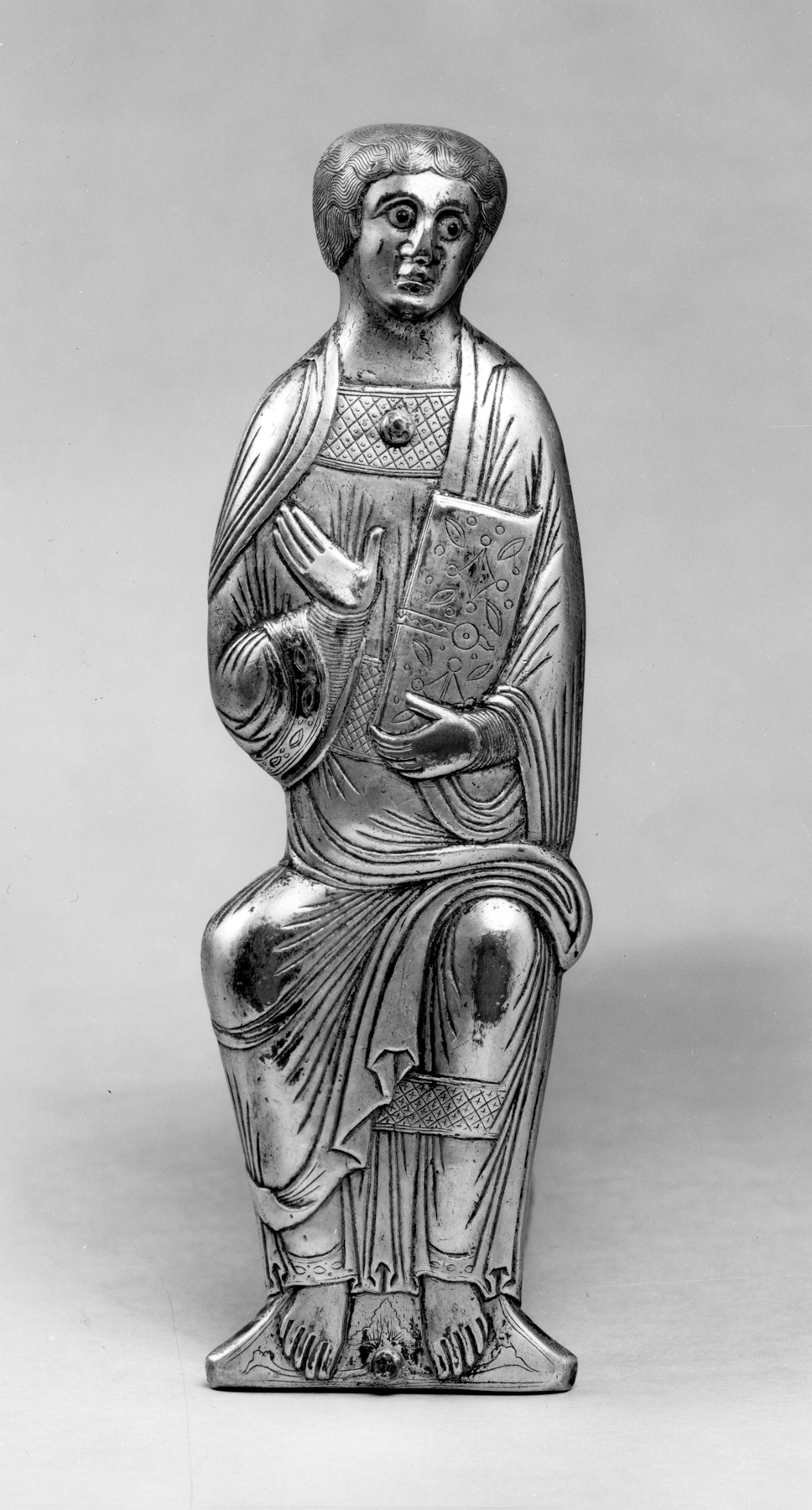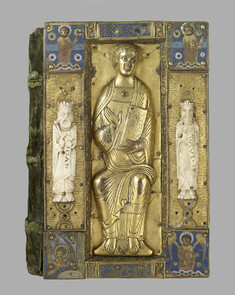Apostle
(Medieval Europe )
This apostle, enlivened by wavy hair and large enameled eyes, was probably attached to a large shrine or an altar frontal (panel) by means of the nail on his chest. He was likely fixed to a panel of brightly colored enamel, with a throne to sit upon, and a halo behind his head, like the twelve seated apostles on the high altar frontal of the Abbey Church of Grandmont (France).
The apostle arrived in the Walters collection attached to the cover of a manuscript (W.23), as depicted in the second photograph. The plaque was most likely attached to the cover in the 19th century, in imitation of the medieval practice of decorating book covers.
Inscription
Provenance
Provenance (from the French provenir, 'to come from/forth') is the chronology of the ownership, custody, or location of a historical object. Learn more about provenance at the Walters.
Henry Walters, Baltimore, by purchase; Walters Art Museum, 1931, by bequest.
Conservation
| Date | Description | Narrative |
|---|---|---|
| Examination | Repaired | |
| Examination | Reattached to treasure binding W.23 (removed 1964). | |
| 6/17/2015 | Treatment | Repaired |
| 6/17/2015 | Treatment | Reattached to treasure binding W.23 (removed 1964). |
Geographies
France, Limoges (Place of Origin)
Measurements
H: 8 11/16 x W: 2 5/8 x 3/4 in. (22 x 6.7 x 1.9 cm)
Credit Line
Acquired by Henry Walters
Location in Museum
Not on view
Accession Number
In libraries, galleries, museums, and archives, an accession number is a unique identifier assigned to each object in the collection.
In libraries, galleries, museums, and archives, an accession number is a unique identifier assigned to each object in the collection.
53.144





